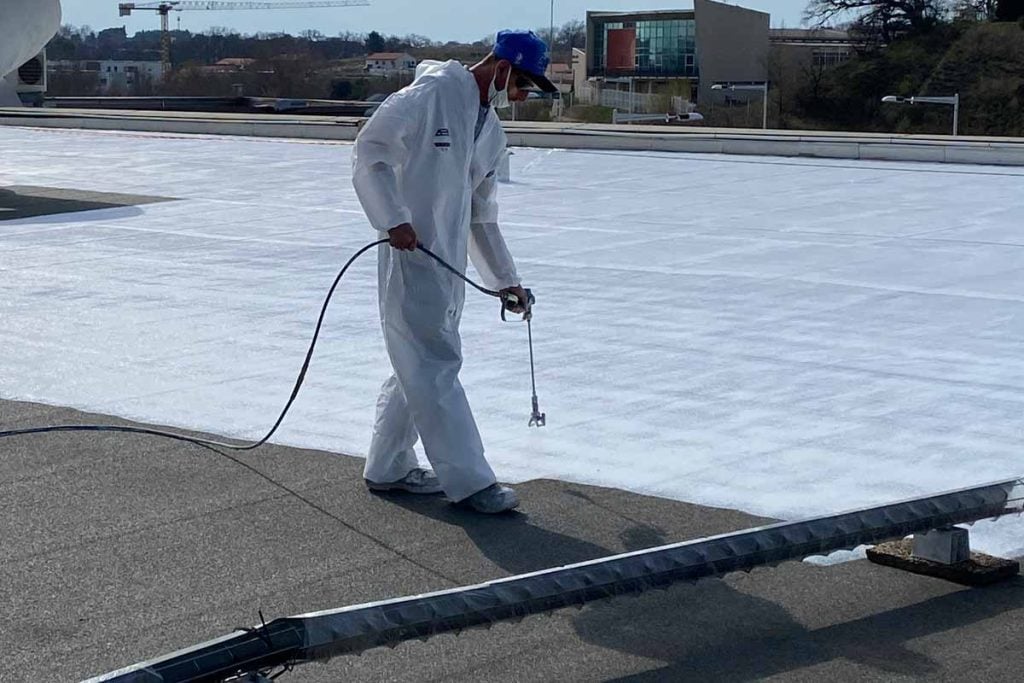A quiet rule has stirred loud opinions, and it all begins with rooftops. What might seem like a simple design choice now reaches into deeper questions of community, climate, and control. The measure touches every street, sparking talk about fairness, freedom, and the limits of local policy. For many homeowners, the decision carries more meaning than color alone — it signals a shift in how cities balance appearance, environment, and everyday life.
What the rule asks of homeowners
The ordinance sets a high-reflectance benchmark for new construction and roof replacements, so existing roofs are not changed overnight. In practice, people install reflective membranes or light, high-albedo shingles that bounce sunlight away. Many call it a “same-color” policy, yet the core is performance: curb heat, not impose a single pigment.
Atlanta leads this push and expects real cooling. Models suggest the city could cool by about 2.4°F on average, with the hottest areas dropping up to 6.3°F. Since trees and parks aren’t evenly spread, rooftops offer a quick, fair way to make a difference. Lowering the heat above buildings eases midday surges and helps protect workers, students, and seniors when the sun is at its peak.
Costs stay sensible because reflective materials are now standard offerings. Suppliers compete on price, and installation follows familiar steps. Roofs also last longer in lower heat, which avoids premature cracking and softening. That durability matters to homeowners, since fewer repairs free up cash for other needs and reduce construction noise on the block.
How the cool-roof system actually works
A cool roof bounces sunlight away and releases stored warmth back into the air, while insulation keeps that heat from seeping indoors. Because less heat enters, air-conditioning runs shorter cycles. Utilities see lighter demand, and indoor rooms feel manageable in late afternoon, even on sweltering days.
Material options may vary, but the purpose stays clear: reflect sunlight and release stored heat. Builders usually pick light shingles, coated metal sheets, or flexible single-ply layers that send brightness back into the sky. With the city’s updated guidelines, permits now move faster and smoother, helping projects progress without unnecessary slowdowns. That predictability helps builders plan schedules and protects budgets without surprise upgrades.
Importantly, the city projects $315 million in energy-bill savings over 35 years. Because reflective options cost no more than traditional ones, and sometimes less, payback arrives through monthly bills, not higher upfront checks. For homeowners, that calm, predictable math builds trust and keeps upgrades on track during busy seasons.
Heat, risk, and everyday protections
Urban heat islands form where pavement and low tree cover trap radiation, while concrete radiates into bedrooms after sunset. Heat waves drag on longer these days, and nights don’t bring the relief they once did, putting stress on both people’s health and their bank accounts. A national study covered by The New York Times found that heat-related deaths in the United States have climbed 117% since 2000.
Health experts say that older adults, babies, outdoor workers, and anyone without steady cooling face the highest risk. Heat disrupts learning, rest, and focus as the body tires faster. Hospitals see more dehydration cases, and when power cuts strike, the danger rises — fans stop, food spoils, and relief fades during the hottest hours.
Cool roofs reduce roof-deck temperatures dramatically, which helps upstairs rooms, corridors, and community spaces. Air-conditioning units cycle more gently and last longer under less thermal stress. For homeowners, that means fewer mid-July service calls and better comfort while cooking, studying, or caring for kids during humid evenings.
Why homeowners are central to citywide cooling
Policy spreads through thousands of small decisions across block after block. Atlanta’s plan is more comprehensive than efforts in Chicago, Los Angeles, and New York City because it ties standards to new roofs and replacements, where choices happen anyway. Because projects arise steadily, change scales without costly retrofits.
The city’s analysis points to cumulative savings: roughly $315 million over 35 years as demand eases. Lower peak loads protect the grid, while quieter compressors help streets sound calmer. Advocates note that cooler roofs soften the “heat tax” on families whose apartments sit under dark shingles or tar.
Economic resilience underpins the pitch. Greg Kats of the Smart Surfaces Coalition frames cool roofs as a cost-effective way to improve health, cut bills, and support local jobs. Because installation uses existing trades, crews stay busy while learning best practices that raise quality. For homeowners, the craft looks familiar, and the results feel immediate.
Timelines, equity, and what “same color” really means
Legal language targets reflectivity, not a single bucket of paint, although many systems appear light or white. Inspectors check performance specs, so creativity remains for textures and materials. That nuance matters to design boards and neighbors who want variety while still meeting the standard of a cooler city.
Equity sits at the center. Council member Liliana Bakhtiari describes the policy as resilience in action, because lower bills and safer indoor temperatures matter most in long-overlooked areas. As roofs brighten across schools, clinics, and homes, the cooling benefits combine with shade and tree programs for steady gains.
Local action scales fast because roofs turn over regularly. Contractors plan upgrades, retailers stock compliant products, and lenders recognize value through lower operating costs. City staff share maps, before-and-after temperatures, and case studies so choices stay transparent. For homeowners, the pathway is routine: schedule, install, and enjoy a cooler top floor.
How a uniform roof policy reshapes daily city life
This policy rewrites the summer script with practical steps that people can follow and trust. Because standards align with normal renovation cycles, life continues while benefits accrue. The city gets cooler blocks, lighter utility bills, and fewer heat emergencies. For homeowners, comfort arrives without gimmicks: quiet rooms, steadier budgets, and roofs that last longer, season after season.
